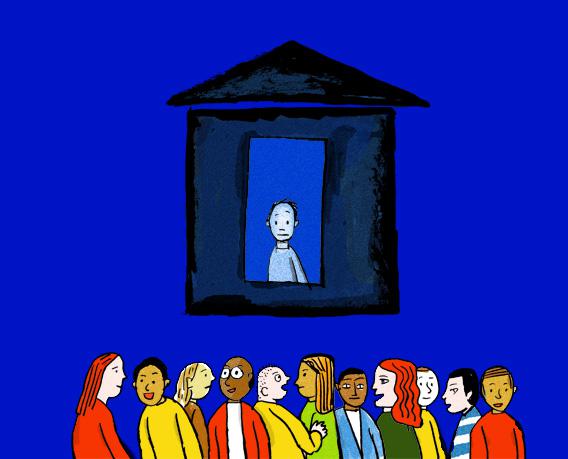Communication doesn’t require verbal language all the time. When you make a heart with your hands, the other can figure out the message that you have a good feeling to him or her even if the other person doesn't hear anything from you. According to Adler et al. (2017), nonverbal communication is “messages expressed through nonlinguistic means.” In this post, I will think about the different types of nonverbal communication.
1. Body movement
The most noticeable nonverbal communication is body movement. Body movement includes posture, gesture, face and eyes expression. Two or more expressions can be combined and show different emotions. According to Adler et al. (2017), gestures are a fundamental element of communication and manipulates another part. (p.167)
2. Voice
The tone of voice simply can change the meaning of the message you want to communicate by changing pitch, intonation, volume, and tempo. According to Adler et al. (2017), listeners pay more attention to the vocal messages than to the words that speak when asked to determine a speaker’s attitudes. (p.170)
For example;
He is a famous doctor. (you emphasize he is a doctor.)
He is a famous doctor. (you emphasize he is a famous, not ordinary doctor)
Practically, most people prefer others who have a more attractive appearance and wears nice clothes. The meaning of attractiveness includes physical attractiveness and also being sensitive, kind, strong, sociable. (Adler et al., 2017, p.170) Physical attractiveness can give a good first impression but, inner beauty can be revealed over time spending together.
4. Touch
According to Adler et al. (2017), tough can elicit a powerful emotional reaction in the receiver. You can get encouraged by a supportive pat on your back or a high five, in vice versa, you might feel upset when someone hits you head for any reason.
5. Space
You can communicate by keeping the space between you and others. We consider space or distance is our territory. We are asked to keep the social distance due to Corvid 19 these days. The social distance ranges from 4 to 12 feet. Intimate distance ranges to about 18 inches, and it involves interaction with people to whom we’re emotionally close. (Adler et al., 2017, p.173) If a stranger approaches into your intimate distance, you can feel uncomfortable or consider as an attack. It is so sad that one woman pushed an old woman to death because the old lady was standing too close to her. The woman must have felt the too close distance of a stranger the same as the threatening of Covid 19.
6. Environment
According to Adler et al. (2017), an environment can shape of interaction. Your places reflect your habits and attitude the way you think. Approaching the other side, people can achieve high performance when they work in a nice environment than ugly or dirty. (p.174) As revealed by researches, when people work in a nice environment, they think that they are valuable to the company which provides the environment for them. It motivates them to work well.
7. Time
According to Adler et al. (2017), the way people handle time can express both intentional and unintentional messages.
The people of the polychronic time-oriented culture (p-time culture) do many things simultaneously, are more concerned with people and the present moment than with schedule and believe that they are in command of time rather than being controlled by it. P-time culture is found bordering in the Mediterranean, Africa, and South America. It can say that polychronic culture has more flexibility than monochronic but people from the M-culture are hard to adjust the P-time culture. (Samovar et al. 2012, p.313)
The people of the monochronic time-oriented culture (m-time culture) organize their lives around time by relying heavily on-time keeping instruments like clocks, calendars, computers, and cell-phone reminders. They emphasize schedules the segmentation of times and promptness. (Samovar et al. 2012. p.313). In a culture that values time highly, like the United States, waiting can be an indicator of status. A lower-status people must never make more important people wait.
You may think Korean is rude or no manner when you see people ask something to a cashier even it is not their turn. Korean people believe it is ok that they ask something to cashier unless it is not about ordering or taking a long time to do it. But in America, that is not acceptable. My husband says if I barge in like that, Americans look down me like no manner person. This example represents Korean culture is more polychronic time-oriented. They put more value to do multitasks in a short time and consider that that flexibility is an individual's abilities.
You may think Korean is rude or no manner when you see people ask something to a cashier even it is not their turn. Korean people believe it is ok that they ask something to cashier unless it is not about ordering or taking a long time to do it. But in America, that is not acceptable. My husband says if I barge in like that, Americans look down me like no manner person. This example represents Korean culture is more polychronic time-oriented. They put more value to do multitasks in a short time and consider that that flexibility is an individual's abilities.
References
Samovar, Porter, McDaniel (2012). Intercultural Communication (13th ed.). U.S.: Wadsworth Nelson Education.
Adler, Rodman, and du Pre (2017). Understanding Human Communication (13th ed.). Oxford, UK: Oxford University Press.






/states-of-the-world-and-their-flags-660869828-5ad8f496875db90036fe331c.jpg)







